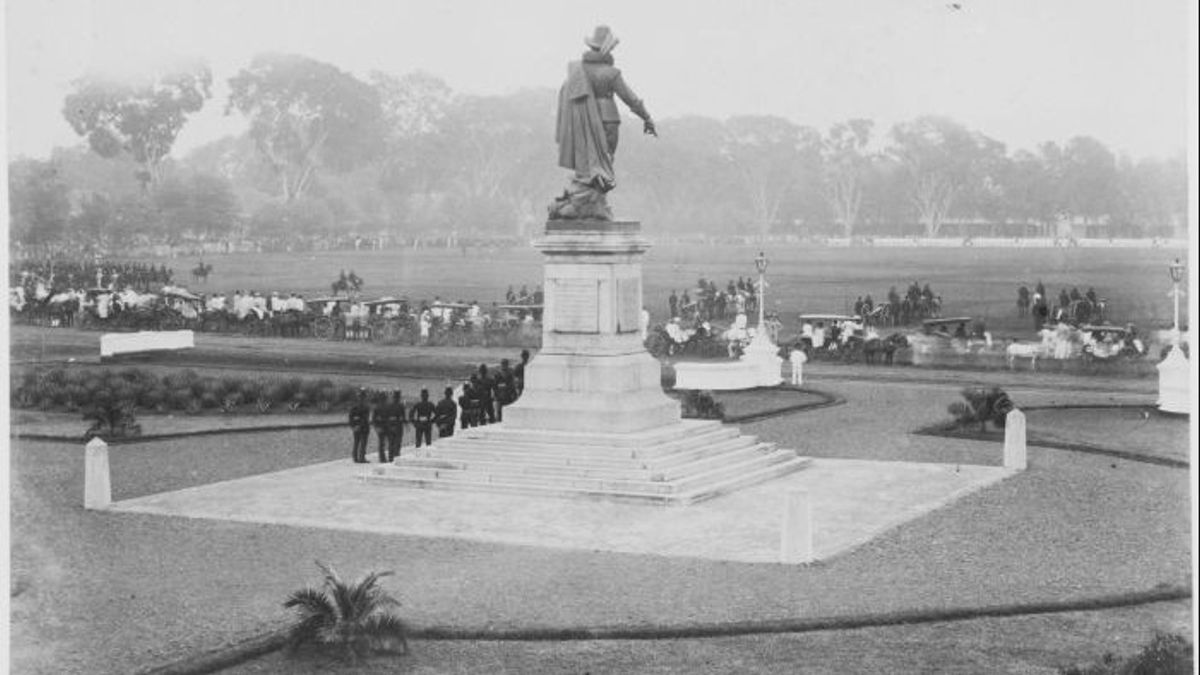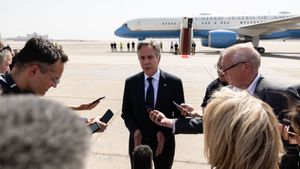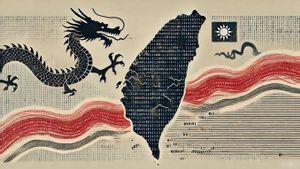JAKARTA - "We are a nation of tempe, or are we a nation of banteng? If we are a fighting nation, if we are a fighting nation, if we are a nation of bulls, and not a nation of tempe, let us dare to grope about dangers, dare to fight. Vivere Pericoloso. "
That was the snippet of Sukarno's speech, Genta Suara Revolusi Indonesia (Gesuri) on August 17, 1964. Bung Karno's penchant for calling a strong Indonesia the 'Bull Nation' was allegedly the reason he wanted to change the field that was once called Waterlooplein to the Banteng Field.
Regarding the Banteng Field itself, if you trace it, it certainly has a long history. In fact, long before Bung Karno shouted, "We are a bull nation, that is, a brave nation," Banteng Field already existed. This description is obtained from a senior journalist, Alwi Shahab, in his book, Saudagar Baghdad dari Betawi (2004).
Alwi said that the bull is not only the spirit of the patriotism of the Indonesian nation, but also has its own story. “In the past, the field used to have a bull. When it opened in 1648, this field was still called Paviljoen Field (Paviljoenvield) belonging to Anthonie Paviljoen Sr. "
Previously, in 1644 the Governor-General of Vereenigde Oostindische Compagnie (VOC) Joan Maetsuijker reported that he and three hundred people had hunted bulls in the field, part of which was still forested. Not only are the bulls being hunted, there are also tigers, pigs and various other animals that roam.
Therefore, the field was once known as a hunting ground for Dutch soldiers. As a result, hunting activities were supported by the colonial government. This is because every animal that is successfully hunted will be led to the city gate of Batavia to be taxed as much as ten percent.
After changing hands, the land became the property of the Governor-General of the VOC, General Van Overstraten in 1797. Until then, there was a great conflict within the VOC, so that the field was confiscated by Marshal Guntur Herman William Daendels - Overstraten's successor - who made the owner. only received compensation of 10,000 ringgit.
"Lion Field"
The fate of the field finally became clear when Daendels began to move the center of government which was originally in Oud Batavia - Old Batavia or the Old Town area - to the Nieuw Batavia Weltevreden area, the area around the Banteng Field.
Therefore, the field functioned as a military camp. Meanwhile, the other surrounding areas were made into the Dutch East Indies government. Many of the Indies at that time called this field the Lion's Field.
This is because in the middle of the field there is a memorial which is a monument to a lion to commemorate the events of Waterloo (1815), namely the defeat of Napoleon in Belgium. For this reason, this field is also sometimes referred to as Waterlooplein.
Luckily, the Dutch soldier, HCC Clockener Brousson, captured the atmosphere of the field when he was named Waterlooplein in a book containing notes on his travels in the Dutch East Indies in the early 20th century entitled Batavia Awal 20th Century (2004).
Brousson was waiting for his guide, Abdulah, to tour Waterlooplein while enjoying the cool air and enjoying popular music from Europe plus a troop of pikker (sailors) dancing among the people.
Brousson revealed, “The atmosphere was very busy there, the musicians stood in a big circle in the middle of the grass field. In front of them, each had a place to read a notation. All around them were crammed with soldiers, lower-ranking officers and several lieutenants in white clothes, ”it wrote.
The rest, he saw sailors wearing special uniforms in a beautiful sunny tropical place. There were also indigenous people, female soldiers, some Chinese, young and slender Indo-non-noni, as well as beautiful Indo-European girls. All attend the party.
“The music played, they brought the chapel zaagman, music that was quite popular in the Amsterdam seventh regiment. I enjoy their good game. I didn't think they were music players from Batavia either. They must be the best music corps in the entire east, ”said Brousson.

Not only Brousson, AWP Weitzel, the author of the book Batavia In 1858 (1860), said the same thing. "The well-trained Batavia garrison music corps performed some beautiful repertoires very well."
Apart from being a place to watch music, this field was also a place for military training and ceremonies to take place. Johan Fabricius, in a book entitled Mayor Tjanje: The Story of the Batavian Landlords of the 19th Century (1979), reveals that the Banteng Field was once used as a military ceremony place led by Augustijn Michiels or who is familiarly called Mayor Tjanje (captain of the Papang people), a wealthy landlord. highway in Batavia.
“Papanger Corps Defile in Banteng Field. Thousands of natives watch on the sidelines, chatting and joking. Or buy snacks at small shops around, ”said Johan.
Famous until now
During its development, when Japan began to dominate Indonesia, the lion statue and the iconic bronze statue of Jan Pieterszoon Coen (the founder of Batavia) were leveled to the ground. Then, after independence, they were replaced with the Irian Jaya Liberation Monument which began to stand in 1963.
Interestingly, the famously shady Banteng Square was once a bus terminal full of hustle and bustle and the roar of the bus engine being turned on. Fortunately, in 1981 it was converted into a public park by the DKI Jakarta government.
Banteng Field is now increasingly popular with young people to kill time. The fame of Lapangan Banteng has also made him often mentioned in several novels published in the 1980s. One of them is a novel by a senior journalist and writer, Arswendo Atmowiloto, entitled Dua Ibu (1981). Here's an excerpt:
"To be part of my unfulfilled aspirations to be able to reach the Banteng Field without the help of other people. Besides, from the Cathedral, you can go to Pasar Baru. Buy meatballs and go home to buy buns, "wrote Arswendo.
The English, Chinese, Japanese, Arabic, and French versions are automatically generated by the AI. So there may still be inaccuracies in translating, please always see Indonesian as our main language. (system supported by DigitalSiber.id)













